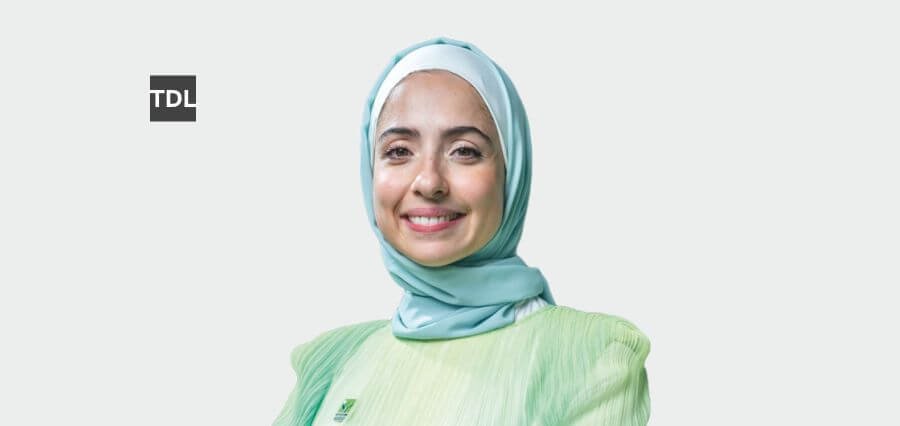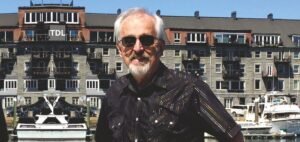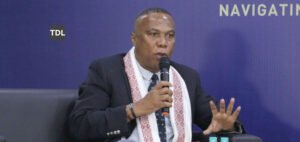As the world grapples with the effects of climate change, it has never been more important that we take pride in the creation of a healthier built environment. The buildings we construct and occupy can be heroes and villains — human health heroes or stealthy purveyors of our world’s misery. To remain on such a razor’s edge requires technical competence as much as vision, compassion, and dedication to bridging and building constituencies. In the UAE, where urbanization is second only to aspirations of being a green leader, Lana AbuQulbain embodies precisely such a rare combination of technical ability and human insight. As an NGO’s Technical Engineer, she continued to establish a field of specialty where engineering minds came to work together and transform buildings into oases for humanity and the earth.
A Journey Reborn of Passion and Compassion
Lana AbuQulbain’s path to sustainability had no script. It didn’t proceed on a mere straight line. She had finished architecture school and worked for two years before leaving it on the shelf to build another type of structure: her family. For seven years, she stayed home with her three children. These years were filled with wonderful experiences. “I found myself in the spaces where my son spends a good portion of his day,” Lana AbuQulbain says. She adds, “I was inquiring repeatedly — what do walls, windows, and hallways do to his ability to focus, to learn, to sense safety? That pretty straightforward question set me on a deeper journey.”
Whereas the rest of us are content with things being as they are, Lana AbuQulbain sat forward and posed design questions that extend into daily life — or at least for the most vulnerable of all: children. That was her purpose. She returned to school and mastered Sustainability of the Built Environment, learning the science of how buildings breathe, consume, protect, and regenerate. “I discovered an interdisciplinary community of challenges but also of unrealized possibilities,” she documents.
Contending with Challenges Efficiently
The challenge is real for Lana. “We need to get it done today, not later — and we need to get it done for our children,” she declares with the passion that motivates all of her endeavors. She holds that the built environment is the cause and solution to global warming. The statistics are moving in that direction: worldwide, buildings contribute to approximately 40% of CO₂ emissions annually. But with each retrofit, each new construction, and each new product, there emerges a chance to shave off a fraction of that percentage. She recalls one such instance which has stayed with her so far — an experience lesson given by her son.
Lana AbuQulbain shares, “After COP28, sustainability became a real, everyday conversation in my household. My son caught me disposing of some plastic bottles one afternoon. ‘I will turn them into a toy,’ he said to me. It was such a little thing and yet such an influential thing — reminding children learn by observing. Children also keep us accountable.”
Bridging Sectors: The Non-Profit Advantage
As Lana AbuQulbain entered the NGO, she was a different world away — a not-for-profit tiptoeing on the fine wire of private imagination and public desire. She is hearing from developers balancing cost against affordability, policymakers figuring their way to net zero, and communities seeking more sustainable spaces to work, learn, and live.
“An NGO has an advantage,” she goes on. “We are not bound by an agenda. We can hear from all sides, find commonalities, and mobilize for change with effect.” Her story is a testament to the NGO’s hard-won trust after decades of experience — trust that brings stakeholders under one roof and encourages collaboration for commonalities.
Technical Expertise That Drives Impact
Lana’s work is grounded in greater than technical proficiency — it’s about providing clean, actionable counsel supported by in-depth research and a real commitment to sustainability causes. She excels at projects involving large-scale planning and coordination, calling on architects, engineers, developers, and community constituents to meet common objectives. From schools and hospitals to skyscrapers and contemporary office buildings, her work is a testament to what clever co-operation can achieve. By developing functional solutions appropriate to the region’s climate and advancing best practice in building performance, Lana AbuQulbain is assisting in creating a more resilient and energy-efficient built environment for the UAE.
Establishing a Culture of Knowledge Sharing
One of the defining characteristics of Lana AbuQulbain is her receptivity to sustainability. “Competition makes us sometimes not want to share. Sometimes organizations are skeptical about sharing what works due to massive competition. But if you withhold, then you hold everybody back,” she says. Rather, she is insistent on creating spaces where best practices are shared openly.
Lana AbuQulbain organizes technical workshops, industry roundtables, and benchmarking studies that give stakeholders clear data to act upon. Her message is consistent: collective progress trumps individual gains. “When people see that you’re not trying to sell them something but genuinely help them grow, trust builds. That’s when real collaboration happens.”
Inspiring Change Where it Matters Most
Lana AbuQulbain responds to the children first. She says that schools are demonstrating livable tests of sustainability — schools that teach children to appreciate resource efficiency, indoor air quality, and sustainable design in practice. “When sustainability is integral to a child’s daily life, it catches on. It becomes part of what they take for granted when they’re adults, how they use resources, and how they live,” adds Lana AbuQulbain.
Apart from the schools, Lana AbuQulbain also promotes embracing sustainability in everyday life. She believes that small things count, recalling when she was a mother herself. “Every gesture counts — turning off unnecessary lights, making low-impact choices on materials, recycling. It’s about building an attitude that choices add up.”
Keeping Pace with a Rapidly Evolving Field
The industry of green building is evolving at a breakneck rate, and Lana AbuQulbain is prepared for all the challenges. “This job humbles you,” she says. “There’s always something new, something brighter and smarter and better. It makes you have to be curious and flexible.” One spur to her enthusiasm is the growing use of artificial intelligence in green design.
Lana AbuQulbain shares “With computer programs employing AI now, you can precisely determine the performance of buildings in a local environment. That’s revolutionary — particularly early in design when decisions have the greatest impact.” Furthermore, she expresses, “much of these tools are temperate climate tools. We have to calibrate them for our climate, with local weather data and building codes. Once you’ve done that, possibilities are vast.”
Of equal concern to Lana AbuQulbain is the growing emphasis on embodied carbon — carbon emissions embedded in the material itself. “Operational efficiency is not enough in itself. We must examine how we source, how we get it to the site, and how we get rid of it. Culture is changing. Designers are starting to examine the carbon footprint of concrete, steel, and glass as a first-order consideration in design,” says Lana AbuQulbain.
Walking the Talk at Home
What is so wonderful about Lana’s approach is that she doesn’t only preach about doing good — she practices it daily. Her family reminds her why her job is important, she says. She states that it is a part of their religion and culture that even if it were Judgment Day and they had a sapling in hand, they should plant it — a firm indication that everything, no matter how minute, has power. This is the belief that guides their little and big choices every day, from open dialogue with their children about saving water, turning off the lights when they are not being used, recycling their toys, and minimizing waste. It’s an intense commitment, but one that is by no means whatsoever simple — one upon which they are still learning to live.
Her children want to know why they do this and what it implies for their family. Lana AbuQulbain feels this indicates that working to protect the environment is a personal option. For her, finding balance is a goal that is interwoven with her life’s work, and not just something working mothers aim to do.
A Future of Hope and Determination
Years ahead, Lana AbuQulbain foresees the transition to sustainability in the region to happen at a pace that cannot be reversed.
Initiatives such as UAE Net Zero by 2050 Strategy concentrate and Dubai Clean Energy Strategy provide the platform to propel the business to think creatively. But most of all, Lana AbuQulbain requires a positive attitude. In her words, “We can’t wait for policies to force us into action.”
Leaders must show the way it can be done — willing to raise the bar and show that high expectations can be fulfilled by determination and innovative maneuvers. She visualizes cities where the systems are regenerative, not extractive — systems that return more energy than they consume, clean the air, harvest water in a sustainable way, and coexist with surrounding biodiversity. “It’s a utopian idea, but there is the technology and the methods. The problem is to do it on purpose at scale,” states Lana AbuQulbain.
Advice to the Next Generation
Lana’s advice to young professionals is both pragmatic and encouraging: “Go for it. But go for it knowing that you’ll have to learn every single day. Stay curious. Be the person in the room who knows what’s next — whether it’s AI tools, embodied carbon strategies, or new rating systems.”
She has a message for women on a personal level as well: “As women, particularly in this part of the world, we have codes and obligations to live by. Honour every step of your life. When you gain knowledge, dig deep into it. When you build your career, give your best. When you try to build your family, do it with a smile and dedication. And when you come back, come back with conviction. No minute is ever wasted when your calling is clear. Ask the questions, and prove to yourself, once you do with honesty and from your heart, ask for the flexibility needed to try to balance your life and your work. And it’s a juggling process but a continuous effort of transparent communication.”
Building Bridges to a Better Future
When asked what she enjoys most about working, she has a quick reply: “It’s the connections. Connecting data to decisions, people to opportunities, and ideas to action. That’s where real change happens — in the space between.”
In a business perhaps constructed to appear intimidating with goals, benchmarks, and carbon statistics to fight, Lana AbuQulbain reminds us that sustainability is not about buildings. It is individuals — and the futures they construct for the generations of people who will inhabit, learn, and flourish in them.
With her deliberate, thoughtful tread, Lana AbuQulbain is further demonstrating to us how one project, one speech, and one individual at a time are literally altering the face of things. Her story is not only about building greener buildings; it’s about building hope.




